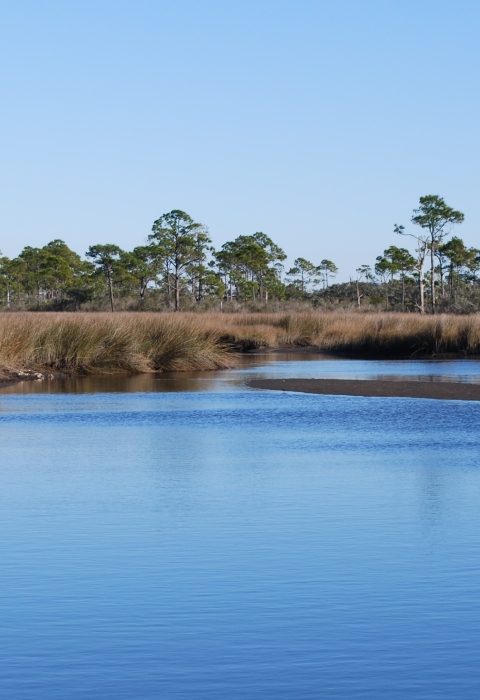What We Do
The Gulf Restoration Program is playing a key role, both directly and in advisory capacities, to steer restoration funds to projects and activities that restore the Gulf of Mexico watershed. We are restoring both the natural resources and the services, such as recreation, that they provide. The source of funds for the vast majority of work we do is legal settlements reached with the parties responsible for the spill.
The Deepwater Horizon Natural Resource Damage Assessment (NRDA) is conducted by a Trustee Council. The Service participates in this group through the membership of the Department of the Interior. Also through the Department, we participate in the restoration efforts of the Resources and Ecosystems Sustainability, Tourist Opportunities, and Revived Economies of the Gulf Coast States Act (RESTORE) Council.
We are also advisors to, and at times implement projects for, the National Fish and Wildlife Foundation’s Gulf Environmental Benefit Fund (NFWF GEBF). All of our restoration efforts seek to leverage multiple funding sources and to engage with our natural resource colleagues and partners at the federal, state, local, and community levels.
Our Services
The Gulf Restoration Office was established after the April 20, 2010 Deepwater Horizon oil spill specifically to participate in the a damage assessment and restoration of natural resources injured by the spill. Upon the passage of the RESTORE Act in 2012, we were given roles and responsibilities for additional restoration efforts. The Gulf Restoration Office works across state and regional boundaries using an ecosystem-level approach to maximize conservation benefits.
Deepwater Horizon Natural Resource Damage Assessment Trustee Council
Through the Department of the Interior, the Gulf Restoration Office and the larger team are active participants in the Natural Resource Damage Assessment restoration process. After the 2016 global settlement with BP, the Trustees established seven area-based Trustee Implementation Groups (TIGs). These groups represent areas defined by each of the five Gulf states, Alabama, Florida, Louisiana, Mississippi and Texas. One represents the Open Ocean and one represents the Gulf region. It is through these groups that we develop, propose, and implement projects that benefit our trust resources and federally-managed lands.
Gulf Coat Ecosystem Restoration Council (RESTORE Council)
The Department is a one of six federal members of the Council. The Fish and Wildlife Service is one of four Department bureaus that play significant roles in advising the Department on restoration priorities and working collaboratively with other RESTORE Council members to achieve restoration and conservation goals.
National Fish and Wildlife Foundation (NFWF) Gulf Environmental Benefit Fund (GEBF)
The Department acts primarily as an advisor to NFWF it considers restoration proposals submitted for GEBF funding. The Fish and Wildlife Service does have responsibility for implementing two restoration projects.

